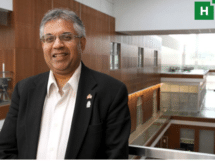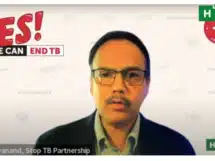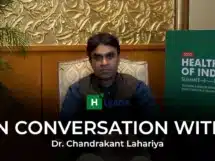Dr Anthony Pais is a Senior Consultant Oncoplastic Breast Surgery, Co-founder & Clinical Director at Cytecare Cancer Hospitals in Bengaluru, India. In an interview, he sheds light on the many challenges and new opportunities in fighting cancer.
1) Has the incidence of cancer gone up dramatically over the last decade?
With more people living longer, the incidence of cancer is bound to increase. The increase has been only marginally though – mostly due to the growing population and better diagnosis.
In terms of sheer numbers though, the incidence of some cancers, such as breast and colon, has gone up, while others like cervical cancer have come down. And then, there are gender and lifestyle factors that play an instrumental role. For instance, lung cancer incidence has gone up in women (mostly those who smoke), while it has come down among men.
2) Which are the most common cancers in Asia, particularly in India?
Head and neck cancers are the most common in the region. Among men, oral, lung and gastrointestinal cancers have the highest incidence, while most women are detected with breast and cervical cancers. Incidentally, India accounts for one-fifth of cervical cancer cases globally.
3) Does gender play an important role? Are women more prone to cancer?
That’s an interesting question that researchers have been trying to find an answer to. The Journal of the National Cancer Institute recently reported that loss of function in certain genes of the Y chromosome, which is present only in men, may cause them to have an elevated risk for cancer. Apart from biological influences, there are also socio-economic factors that come into play. Are people aware of their exposure to carcinogens? Do they have easy access to screening tests? Are these tests affordable?
In my opinion, more than gender, it’s the average age of people with cancer in India that calls for attention. For instance, the peak age at which breast and ovarian cancer are detected in women in India (45-50 years) is about a decade earlier than in Western countries where these cancers occur mostly in women over 60 years of age.
4) In terms of cancer diagnosis and treatment modalities, what have been the biggest breakthroughs in the recent past?
There have been several inspiring breakthroughs in recent years. The next-generation sequencing (NGS) of circulating cell-free DNA (cfDNA) has provided promising results. The development of immunohistochemistry (IHC), markers for various cancers, liquid biopsies and genetic tests have transformed the way we diagnose and tailor cancer treatments.
The development of newer drugs for targeted treatment is paving the way for effective and personalised cancer therapies. Similarly, immunotherapy, as well as newer isotopes for diagnosis and treatment, are yielding better results. As diagnostic scans get more accurate and radiation treatments come with lesser side effects, early detection and timely cure are becoming a reality – at least in comprehensive cancer centres in the urban areas.
5) Is there any recent research that you think has the potential to be a true game-changer in the way we deal with cancer?
I see great potential in gene therapy, genetics, and stem cell research. Studies on finding newer pathways for targeted therapy is another area to watch out for. Although research efforts in multiple centers are commendable, we still have a long way to go. Without adequate funding and infrastructure, it is a tough challenge to unlock the game-changing potential of these advanced technologies in transforming the lives of millions of people with cancer.


















Add Comment